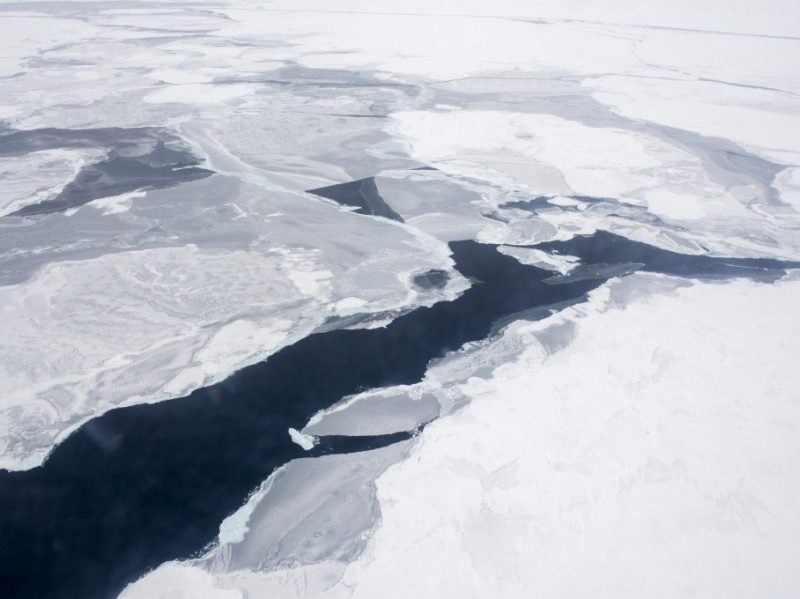
The Arctic is an area of great interest for oil and gas companies, but it also presents a number of logistical problems for exploration efforts.
New drilling in any area is expensive, and the development of the necessary infrastructures, including exploration platforms and pipelines for oil and gas, represent a significant investment for oil and gas companies.

Discover B2B Marketing That Performs
Combine business intelligence and editorial excellence to reach engaged professionals across 36 leading media platforms.
These expenses are exacerbated by the inhospitable climate of the Arctic – with significant portions of the Arctic Ocean covered by sea ice, drilling rigs and platforms need additional reinforcement and technological developments to work effectively.
“The key specificity of [Arctic] fields is their remoteness, lack of infrastructure and severe climatic conditions, requiring huge capital expenditures and having high lifting cost of oil and gas,” head of the oil, gas and petrochemical department at the Far Eastern Federal University (FEFU) Alexander Gulkov told TASS. “Development of Sakhalin’s offshore fields is complicated by unique severe ice conditions and requires huge costs.
“Use of subsea production systems is the most promising in such an environment but I regret saying these are imported technologies normally. Two such systems are currently operated on the offshore Sakhalin, serviced by foreign companies, and our next task is to switch to servicing by Russian companies.”
One problem the FEFU is trying to resolve in collaboration with Anchar is ultrasonic surveys; offshore oil and gas fields generate ultrasonic noise as a result of seismic activity, but this noise is difficult to capture using a typical sensor setup. The layer of ice over the Arctic Ocean also makes it difficult to place an infrasonic station on the seafloor, which are typically used to survey subsea resources.

US Tariffs are shifting - will you react or anticipate?
Don’t let policy changes catch you off guard. Stay proactive with real-time data and expert analysis.
By GlobalData“The University in cooperation with Anchar can offer the innovative technology of acoustic low-frequency oil and gas exploration for reduction of exploration costs in the Arctic environment,” said Gulkov.
How does the technology work?
FEFU is currently developing a low frequency infrasonic acoustic emission technology that utilises remotely-operated vehicles (ROVs), as a solution to the challenges posed by the icy waters.
These robotic vehicles are able to carry out the important task of conducting seismic surveys to discover oil and gas resources in areas inhospitable to humans, and could allow for maintenance and inspection of Arctic drilling sites without the need for human operation in the Arctic’s severe climate conditions.
“The key feature of our proposal is to use an autonomous underwater robot that can carry an infrasonic station to the seafloor,” says FEFU’s head of innovation in its oil, gas and oil chemistry department Alexander Lukin. “Later this station will provide seismic signals recorded and delivered by the same robot to the sea surface area to the given point.”
Autonomous robots are not new to the world of oil and gas exploration, and many companies have started to adopt ROVs for operations such as rig inspection and maintenance.
“This is a very simple idea, but it can help make exploration safe and cost-effective. On the other hand, it is complicated to deploy,” Lukin says. “FEFU has a special group that can develop underwater robots and cooperate with some scientific and technological groups.”
The FEFU has a dedicated Underwater Robotics division, which specialises in ROVS and autonomous underwater vehicles (AUVs) in collaboration with the Russian Academy’s Institute for Marine Technology Problems.
The future of Arctic exploration
While this technology could open up Arctic exploration by making initial surveys more effective and efficient, the future of oil and gas operations in the Arctic is largely uncertain due to shifts in the socio-political climate.
There have already been a number of protests against offshore drilling operations in the Arctic, most notably from environmental group Greenpeace who has been challenging the Norwegian state’s approval of Arctic drilling.
Plans to open up the Arctic to oil and gas exploration in the US have also been contested by environmental groups and federal courts concerned by the potential environmental damage Arctic drilling could cause..
Another point of concern with Arctic drilling is the potential impact to the fragile Arctic ecosystems, which have already been affected by global warming.
The low-frequency ultrasonic technology developed by the FEFU and Anchar could help with monitoring and potentially reducing the impact of seismic surveys on local wildlife, but these developments would not solve the greater problems associated with Arctic exploration.





